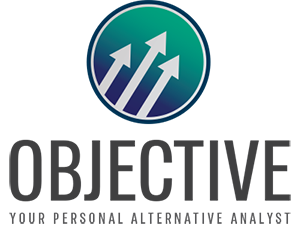Comprehensive Analysis
Objective’s analysis is a comprehensive, professional and an independent evaluation of the fund, designed to assist investors in the process of investment decision-making. The analysis analyzes all aspects of the fund and reviews its various characteristics. Each investor is steered by the analysis and use it to substantiate an investment decision.
To perform the analysis, Objective’s team obtains a large range of materials from the fund, including, inter alia, questionnaires, presentations, private placement memorandums (PPMs), quarterly reports administrator reports, and uses external information systems for market and returns analyses, etc.
For investors electing to make an investment, Objective continues to monitor the fund and issues an annual analysis that reviews its status. Moreover, Objective initiates meetings with the fund’s representatives, both prior to the investment and throughout the fund’s life cycle.
Key Tools Used to Prepare Our Analysis
Assessment and Analysis Model
Investment Mapping Questionnaire
Content Gathering and Data Room Access
Meeting with the Funds
Advisory Committee
Extensive Database
Broad Professional Knowledge and Practical Experience
Analysis Outline
The analysis structure described below is a permanent format to which Objective adds layers and makes adjustments according to the characteristics of each fund.
This chapter reviews the fund: its history, the team, key persons and the meaning of the departure of a key person, the organs (investment committees, board of directors), the company's management quality assessment, operational infrastructure and potential conflicts of interest.
This chapter explores the area of activity of the fund, the rationale of the investment, the structure of the transaction and the process of executing the transactions, from the selection of the transaction, through the ongoing management to the exit strategy. In addition, the investment portfolio is examined and exposures are analyzed along with the valuation model and relevant restrictions.
This chapter analyzes the market in which the fund operates, with an emphasis on the fund's operations and future success. Moreover, the applicable market regulation and the relevant competitors are also reviewed.
This chapter reviews the target returns of the fund, compared to an analysis Objective's team performes by collecting historical data, as well as reference indicators such as comparison with other funds and comparison with investments in the tradable market. The collection of such data and information assists in ensuring that the target return is the fund’s real return.
This chapter describes the terms and conditions of the fund, which include, among other things, management fees, the manner of reporting to investors, liquidity possibilities and more.
The chapter processes all available data by which Objective’s team of analysts analyzes the fund’s risks and the probability of their occurrence. These risks include, inter alia, business, economic, sectoral, regulatory risks & other risks. Risk moderators and risk levels are evaluated with respect to each risk factor.
This chapter lays out the unique factors of the fund’s operations, the basis for the investment viability, the factors distinguishing it from other funds, and the reason this differentiation can allow the investors to have a better understanding of the fund's strategy.
This is the last chapter of the analysis, it presents the conclusions arrived to by the Objective’s team and the bottom lines of the fund’s strategic activity. This part also includes the team’s general impression of the fund’s organs and risk management. Objective does not provide a recommendation on whether to invest in a fund or not.
Analysis throughout the Investment Life Cycle
For those investors who decide to invest in the analyzed fund, Objective will continue to regularly monitor the fund and produce an annual report based on the enhanced pre-investment analysis and changes that actually occurred in the fund compared to the planning stage. The annual report contains, among others, changes in the fund’s structure, a report of the actuall investments made and their impact on the fund’s return, an update on the market changes and the realization of risks (if any risks occurred and new risks are added). The annual report allows the investor to obtain a complete and reliable picture and remain updated on his investments.
Alternative Investment Services
Objective guides and supports potential investors in the process of portfolio diversification with alternative funds. Our services are tailored to the investor’s needs, including attendance at Investment Committee meetings, presenting opinions, reviews and reports.
Objective offers several services in the scope of alternative investments:
- Tailored Alternative Investment Stragety – Objective’s services includes meetings with the investor, analyzing the investor’s alternative investment portfolio, in which an overview is provided, inter alia, of the alternative investment funds, along with personally tailored guidance.
- Presentation of Alternative Investment Funds – Objective provides an analysis overview of an alternative fund chosen by the investor; comprehensive explanation, industry knowledge and strategic insights on the fund’s suitability to the investor’s needs. Objective’s profound analysis of the alternative investment fund will enable the investor to decide whether to include it in its general investment portfolio and to what extent.
- Alternative Investments Knowledge-Base – A broad overview of all current raising capital funds in the market, focusing on different categories (hedge funds, real estate funds, infrastructure funds, credit funds and others) according to the investor’s requirements. With this information, the investor can obtain a broad picture of those funds that are relevant to him, and if he is interested, he can initiate an analysis of the fund he wishes to explore. This service enables the investor to make better-reasoned decisions that align with thier interests.
External Operational Control
Many investors carry out the internal process of investment operations of alternative funds manually, as opposed to their tradable investments for which data is recorded in the bank’s systems based on continuous reports from the stock exchange. The investor also carries out the operational aspect of the investment, according to instructions and reports provided by the fund’s administrator (e.g., the number of units held by the investor, money at call, holdings value). Some investors do not supervise the activities of their Operations Department and their bank as they operate under heavy load and difficulties in maintaining control of all aspects of the investment.
Objective’s control services are secondary controls of the alternative investment activities of the investor Operations Department and its bank. Objective provides a quarterly control service includes due dilligence of the alternative investment portfolio data, which includes identification of failures & monitoring activities in all aspects: security definition, financial movements, revaluation of assets, returns and management fees and verifying the data in the funds’ reports.
Types of Controls:
- Monitoring and overseeing the revaluation of the alternative invested funds.
- Adequacy Check to ensure that periodic reports and updates are complete, accurate and up-to-date, which are used as a basis for the revaluation of the investment funds.
Our control services will focus on the following:
- Definitions of a Security – verification of correctness of asset classification.
- Financial Transactions – evaluation of the correctness of execution of financial orders.
- Revaluation of Assets – comparison between the actual results of the revaluation and the funds’ statements.
- Returns – calculation of funds returns.
- Management Fees – tracking management fees and ensure accordance with valid agreements.
Objective’s control servies are based on the following data:
Email correspondence, quarterly reports and historical data regarding alternative investment funds from the investment house and the operating bank.

